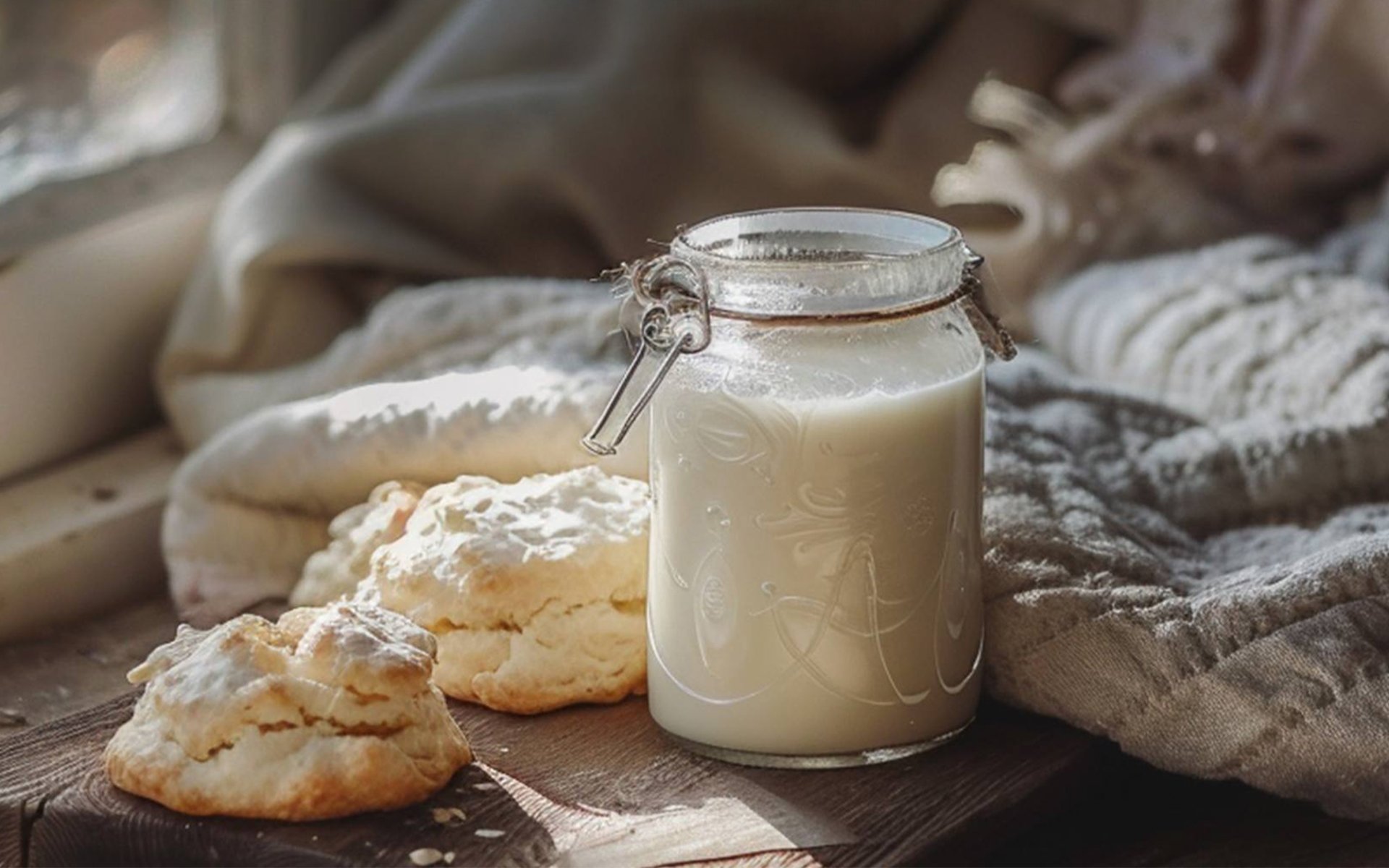Buttermilk

Buttermilk, also known as churned milk, is a fermented dairy drink with a history spanning centuries. It's popular for various culinary applications, including marinating meats, making sauces, preparing fried batters, and baking desserts such as ice cream, cookies, crepes, donuts, scones, muffins, waffles, and pancakes. Today, Rimping Supermarket invites you to delve into the story of Buttermilk.
Origins : A Byproduct of Butter Making (Ancient Times)
The history of Buttermilk dates back to ancient times when dairy farming was an essential part of daily life. Historically, Buttermilk was a byproduct of the butter-making process, the liquid left over after churning butter from cream. However, in those days, modern technology was not available, making it difficult to separate cream from milk. Thus, traditional Buttermilk often contained some fat, and this original form was known as Churned Buttermilk.
Buttermilk in Europe: Culinary and Health Benefits (Medieval - Renaissance Eras)
During the Medieval era, Buttermilk became a significant part of European cuisine. Its slightly tangy flavor made it popular for various dishes, especially soups, stews, and baked goods like sourdough bread and pancakes.
In the Renaissance era, Buttermilk gained recognition for its health benefits. This was due to its natural probiotics, which are beneficial bacteria that help balance the gut microbiome, aid digestion, and alleviate symptoms such like constipation, diarrhea, and bloating.
Introduction to the USA and Commercial Production (19th - 20th Centuries)
In the 19th century, Buttermilk was introduced to the United States by European immigrants. It quickly gained immense popularity, especially in the South, where it was often used as a substitute for sour cream, yogurt, or mayonnaise in certain recipes.
During the 20th century, the Buttermilk production process underwent significant changes. Modern butter production methods involve separating cream from milk before churning, which resulted in a reduced quantity of traditional churned buttermilk. Consequently, a new method of Buttermilk production emerged. This involved fermenting skim milk or cultured milk with lactic acid bacteria to achieve a taste and texture similar to traditional Buttermilk.
This method allowed for consistent and large-scale production of Buttermilk to meet demand. Furthermore, this new production method resulted in lower fat content and extended shelf life, leading to a significant increase in commercial production.
Buttermilk Today: Versatility and Health Benefits
Today, Buttermilk remains a popular ingredient worldwide. It can be used in a wide range of savory and sweet dishes, baked goods, and beverages, often mixed with fruits or blended into smoothies.
Whether used in traditional recipes or adapted for modern dishes, Buttermilk continues to be a versatile and nutritious ingredient found in households globally.


